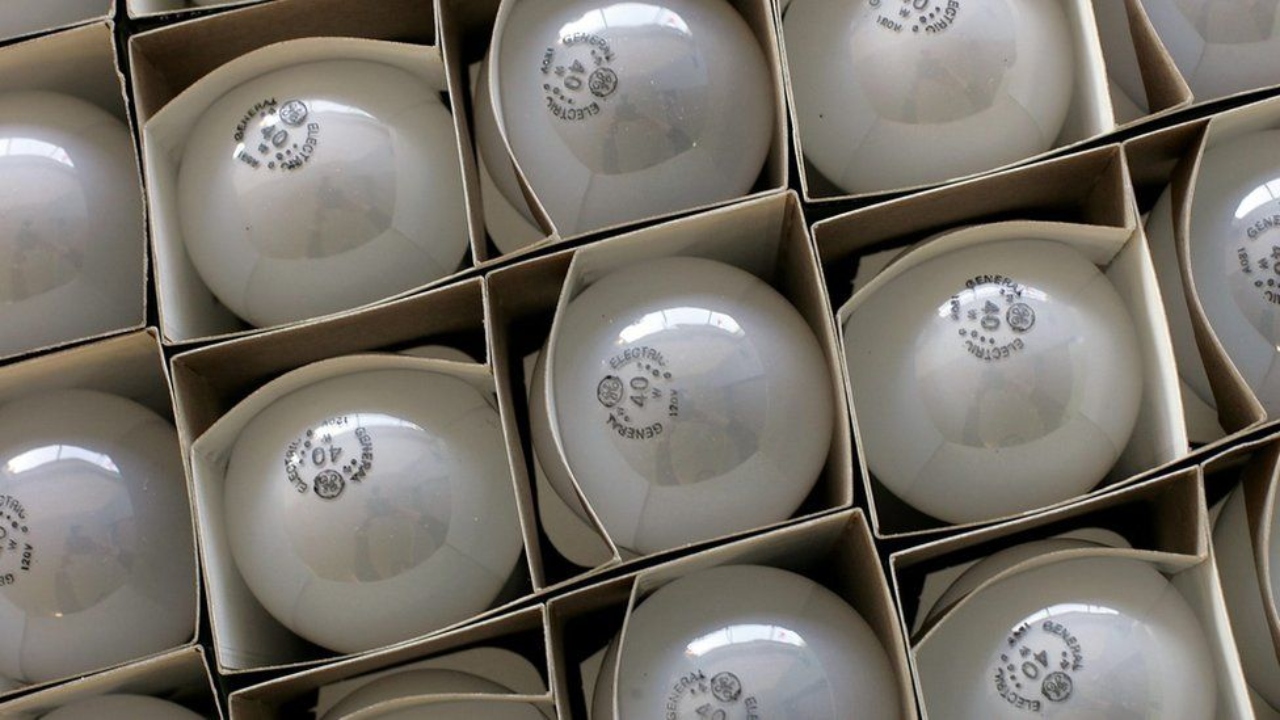The Biden Administration will implement a ban on incandescent light bulbs starting today, restricting options for buyers.
Light Bulb Ban
A ban on incandescent lightbulbs takes effect August 1, meaning you soon won’t be able to buy them.
Consumer data shows about 1/3 of bulbs purchased in the U.S. are the traditional incandescent lights.
Fluorescent lights light up using inert gas contained within the casing, while LEDs do not require any gases. Due to the nature of fluorescent lamps, they produce UV radiation which gets converted to light using phosphor coating.
On the other hand, LED lights use electromagnetic radiation. The lighting is handled by an infrared emitting diode designed to produce infrared energy.
A new minimum standard is set for light bulbs at 45 lumens—or brightness—per watt, an increase over the average 12 to 18 lumens per watt for incandescent bulbs.
Retailers will be prohibited from selling any bulbs—including incandescent bulbs—that don’t match the new standard, though households using any existing bulb that does not meet the standard will not be required to stop using them.
The decision was meant to conserve energy and “help consumers save on their energy bills,” according to the Energy department.
President Joe Biden and his Department of Energy received fierce backlash via social media as commenters disagreed with the administration’s decision to ban the sale of incandescent light bulbs.
An Outpour of Backlash
Some found an issue with the main incandescent alternative, LEDs, for their intense qualities.
“People with ZERO understanding of photobiology are creating harmful policy. There are numerous scientific publications on the negative effects of LED. Not just damage to rods and cones but overall health,” one user said.
“LIGHTS OUT. Say goodbye to your cozy incandescent lightbulbs. It was a nice 140-year run while it lasted. Thanks @POTUS,” Rep. Keith Self, R-Texas, tweeted.
Negative Health Effects
According to an article about the health effects of LED light bulbs, they had this to say about health effects:
Until the 1990s, LEDs were only available in red, yellow or green and were used as indicator lights in basic electronic equipment like alarm clocks or remote controls.
With the creation of the first blue LED in 1992, by combining it with a material that re-emits photons in longer wavelengths, it became possible to create a white light intense enough for use in lighting. Negative health effects from LEDs can be:
- Disrupted sleep
- Eyesight damage
- From depression to diabetes
- Increase in blue light
The culmination of several years of research – including analysis of over 600 scientific publications, the report stresses the “disruptive effect on biological rhythms” of blue-rich LED lighting, stating that “LED lighting and objects significantly increase exposure to blue light.”
The lightbulbs the administration is forcing Americans to use may make some groups of people, such as children, adolescents, and workers, more susceptible to “headaches, visual fatigue and risk of accidents.”
Here are other articles you can check out:
Increase in LED lighting ‘risks harming human and animal health’
Are LED Lights Safe? Are They Harmful to Your Health?
The Horrors Of Working And Living Under Fluorescent & LED lights
Further Reading:
New York Bans To-Go Ketchup and Napkins
New Bill Will Ban Sales of These Popular Candies
New Gas Stations Banned in Honor of Climate Change
Biden Crackdown Targets More Home Appliances
Biden’s New Proposed Rule To Outlaw Gas Generators, Not Just Gas Stoves!
Get the news you need at It’s On News.



Free America is slipping away.